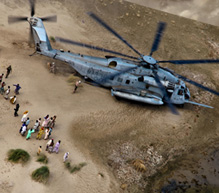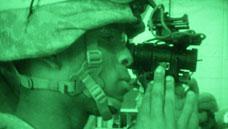
MISSION READY
To maintain a constant state of maximum readiness, the Marine Corps ensures that almost all of its equipment can be loaded and transported aboard the amphibious ships of a Marine Expeditionary Unit. When needed, every piece of gear the MEU carries can be launched to shore by heavy-lift helicopter, amphibious assault vehicle or U.S. Navy landing craft. Space aboard these ships is at a premium, and careful planning is required to accommodate the tanks, trucks, armored vehicles, aircraft, weapons and gear Marines will need to respond to any threat that may arise around the globe.

DEFINED BY MORE
If you had to define the Marine Corps using only a single word, that word wouldn't be tanks. Or jets. Or ships. It could only be "Marines." We are a warrior class that cannot be defined solely by the weapons we carry or the machines that carry us. Rather, it is the title we earn and the difference we make that distinguishes every Marine.

EQUIPMENT BEFITTING OF A MARINE
If it negatively affects mobility, it doesn't belong in the Marine Corps' inventory. This point was made clear in 2008 when then Commandant General Conway cancelled orders for a Modular Tactical Vest (MTV) that Marines found cumbersome, heavy and interfering with normal body movements. In early 2011, the Marine Corps began replacing the MTV with the Improved Modular Tactical Vest (IMTV) that is both lighter and less restrictive.

















